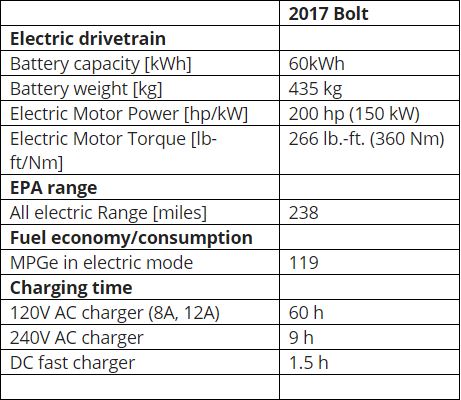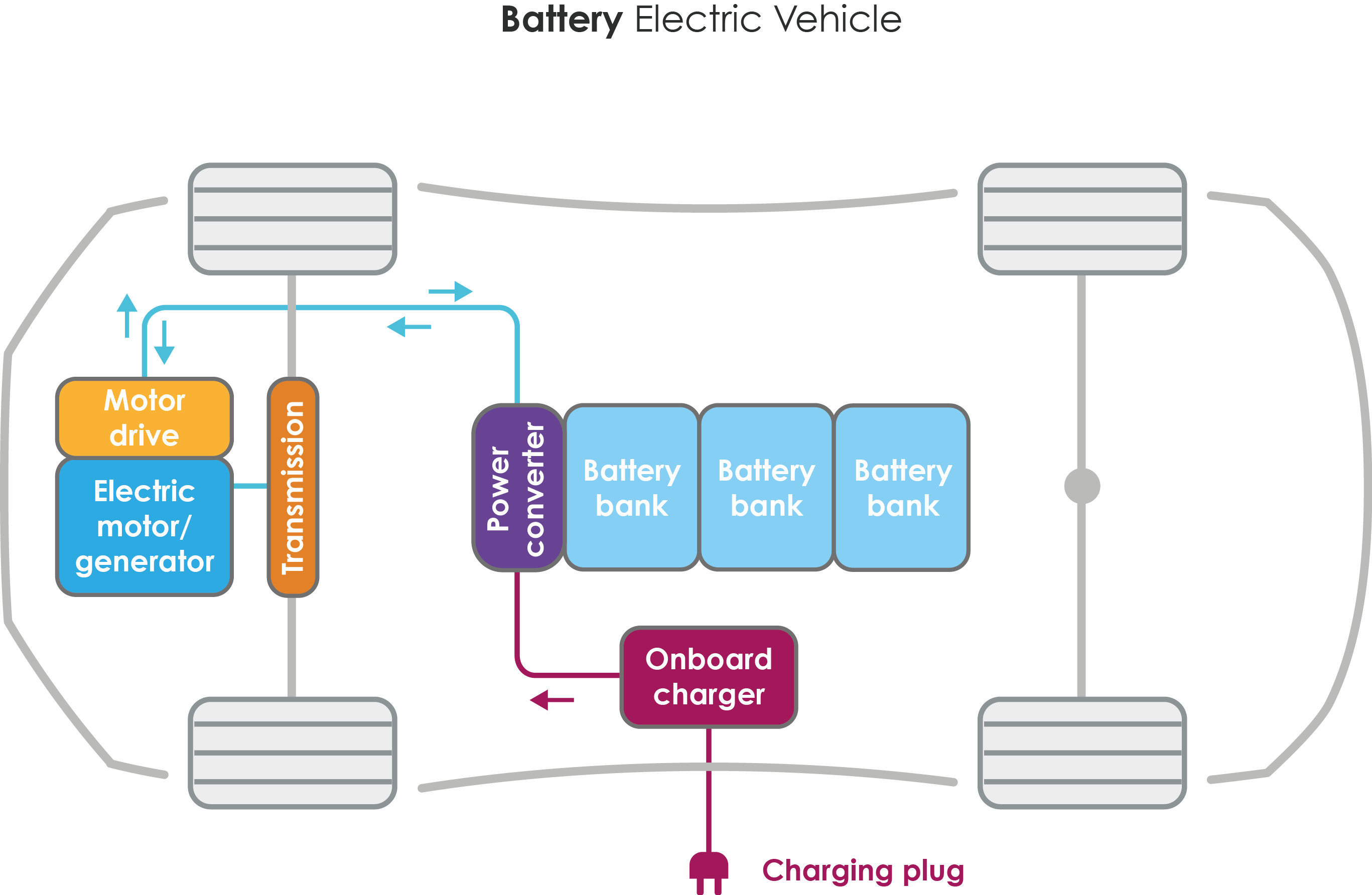2.4.4 Bolt – BEV
Course subject(s)
Module 2. Introduction to Technology of EVs

Image: Chevrolet Bolt (Source: Chevrolet, CC-BY-NC 3.0 license)
In this unit, we will look at the operation of the 2017 Chevrolet Bolt battery electric vehicle (BEV). The key specifications of the BEV are given in the table below:

The Chevrolet Bolt is a battery electric vehicle. Unlike the Volt, the Bolt does not have an range extender internal combustion engine that the propel the vehicle using gasoline. The Bolt relies on a 60 kWh battery pack that gives it a range of 238 miles, which is more than 3 times the energy capacity of the Volt Gen 2 battery pack. It is interesting to note that the Bolt battery pack has a much higher energy density which helps in making the vehicle lighter. The overall fuel economy of the Bolt is 119 MPGe which is much higher than the 119 MPGe of the Volt Gen 2. This is especially important to provide as much range as possible with a given battery energy capacity. Due to the large battery size, the Bolt not just has AC charging but also has fast DC charging that can provide 90 miles range in 30 minutes

Image: Block diagram of a battery electric vehicle (plug in electric vehicle) such as the Bolt
In the next set of images, let us look at the key components of the Chevrolet Bolt:

Image: Chevrolet Bolt propulsion system components and the vehicle chassis (Source: Chevrolet, CC-BY-NC 3.0 license)

Image: Chevrolet Bolt propulsion system components showing the battery pack at the bottom, the motor, power electronics and gearbox in the front (Source: Chevrolet, CC-BY-NC 3.0 license)

Image: Chevrolet Bolt Drive Unit showing the Permanent magnetic drive motor which has a power of 200 hp / 150 kW and provides a torque of 266 lb-ft / 360Nm (Source: Chevrolet, CC-BY-NC 3.0 license)

Image: Chevrolet Bolt battery pack with energy capacity of 60 kWh. The pack is flat and placed at the bottom of the vehicle. The battery is made of 288 cells and has a total weight of 435 kg (Source: Chevrolet, CC-BY-NC 3.0 license)

Image: Chevy Bolt charging system showing a CCS/Combo US vehicle inlet and connector for both AC and DC charging (Source: Chevrolet, CC-BY-NC 3.0 license).

Electric Cars: Introduction by TU Delft OpenCourseWare is licensed under a Creative Commons Attribution-NonCommercial-ShareAlike 4.0 International License.
Based on a work at https://online-learning.tudelft.nl/courses/electric-cars-introduction/.



